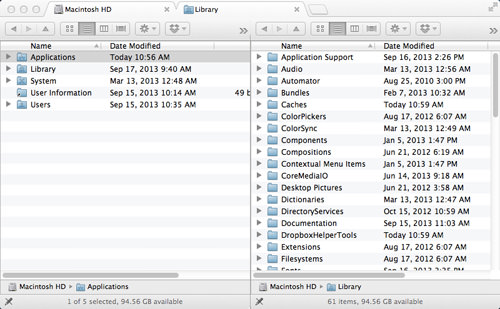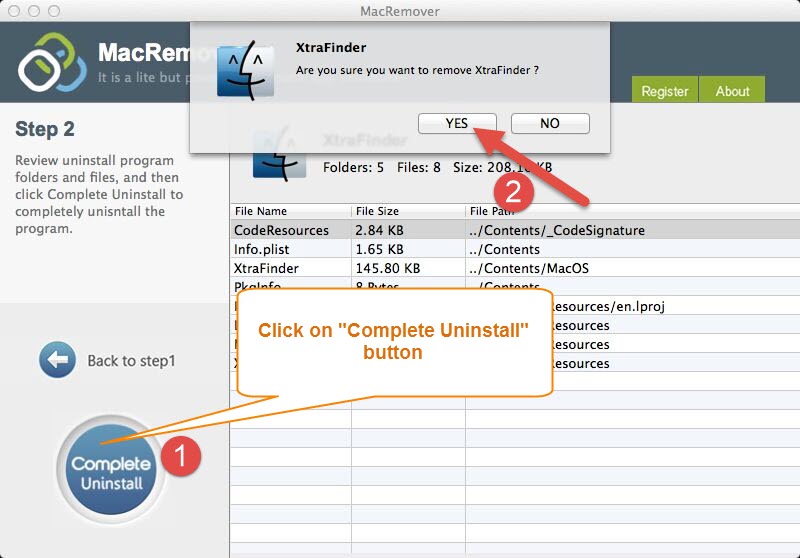

- XTRAFINDER WAS NOT INSTALLED PROPERLY HOW TO
- XTRAFINDER WAS NOT INSTALLED PROPERLY INSTALL
- XTRAFINDER WAS NOT INSTALLED PROPERLY DRIVERS
- XTRAFINDER WAS NOT INSTALLED PROPERLY ARCHIVE
- XTRAFINDER WAS NOT INSTALLED PROPERLY WINDOWS 10
XTRAFINDER WAS NOT INSTALLED PROPERLY ARCHIVE
As the task this time was to create an archive of the whole system and the old backup files to be removed the script had to be changed a bit. Some time ago I posted a script to backup Linux system to external drive using rsync. Then type these lines (delete anything in the file if the file exists)Īnd this is the end of it in general, next is to post the script to shutdown, backup and then start the KVM when time is available. To fix this edit the content of powerbtn file (create the file if does not exist): If you try to shutdown your VM from host terminal with the virsh shutdown VM_Name_Here without success this might be due to not working acpi event handler. To have your VM starting automatically when the host starts or is rebooted run the commands:įirst make sure libvirtd service is stared on boot: After the installation you can run RDC on Windows and set users to connect to your VM directly without third party software. The path for me was: E:\viostor\w10\amd64. In the installation process you will have to navigate to the folder containing the virtio disk driver, mind in my case it was drive E:, but may not be the same for you. Open the file nf and edit the following:Īfter a successful VM creation you will need a VNC client to connect to the VM and start the installation of Windows. If stumble upon error stating that the access to the KVM kernel module is denied do the following:

–disk /var/lib/libvirt/boot/virtio/virtio-win-0.1.173.iso,device=cdrom,bus=ide \ –disk /var/lib/libvirt/boot/Win10_1909_EnglishInternational_圆4.iso,device=cdrom,bus=ide \ –disk path=/var/lib/libvirt/images/windows_10_圆4.qcow2,format=qcow2,bus=virtio \ With the disk set it is time to create the VM: Qemu-img create -f qcow2 /var/lib/libvirt/images/windows_10_圆4.qcow2 80G Next create the VM’s virtual disk, adjust to your needs:

XTRAFINDER WAS NOT INSTALLED PROPERLY DRIVERS
Create “virtio” (or some other name) folder in /var/lib/libvirt/boot/ and download the drivers (checking for the latest version is probably a good idea):
XTRAFINDER WAS NOT INSTALLED PROPERLY WINDOWS 10
In order Windows 10 to recognise your virtual hard disk during its installation you will need to get the vertio drivers.

Then run the following commands to apply this configuration to the VM: Verify your group membership with id command:īridge networking has to be configured for the VM as well, so do the following:Īppend the following config in the file, make sure bridge interface name is the same as in your interfaces configuration: Next step is to let regular user to manage the VM: Restart the networking service (or reboot) and test your connectivity is working as intended. # This file describes the network interfaces available on your system This is how my /etc/network/interfaces file looked like after the configuration change: If it happens to have a OpenVPN server already running on the Debian server as I did, make sure you change your VPN interface to TAP and add it to the bridge, otherwise you won’t be able to browse your network. For this you will have to create a bridge interface, make sure you have the bridge-utils package installed. When the installation is finished you will have to change your network interfaces so the virtual machine becomes part of your LAN. The reason of –no-install-recommends switch is to avoid installation on packages related to GUI, which I personally avoid on server installations.
XTRAFINDER WAS NOT INSTALLED PROPERLY INSTALL
When ready you need to install quite a lot of packages, so in your terminal type the command:Īpt-get install –no-install-recommends qemu-kvm libvirt-daemon-system libvirt-clients libvirt-daemon-system libvirt-dev libguestfs-tools genisoimage virtinst libosinfo-bin virt-viewer virt-manager acpidīe patient, it will take some time. If the output is “kvm: disabled by bios” you need to alter the BIOS settings, otherwise you are fine. Then you need to check if the hardware virtualisation is enabled and if not you need to change the settings in your BIOS. If the output of the command is 1 or 2 you are good, 0 means no go for you. Commands has to be executed as root.īefore you start is a good idea to check some hardware capabilities of the host computer, especially if it is not relatively new.įirst you need to check if your CPU supports virtualisation, to do this run the command: This guide assumes you already have a working Debian 9 installation /the steps should in general work for Debian 10 as well/.
XTRAFINDER WAS NOT INSTALLED PROPERLY HOW TO
This is why I decided to put in brief the steps how to do it and describe the problems I had to deal with. There are many tutorials out there about how to create KVM, but not many go in to details on how to do it if your guest OS is Windows and also scares info on the problems you may encounter.


 0 kommentar(er)
0 kommentar(er)
